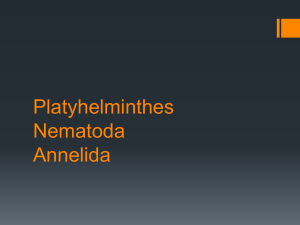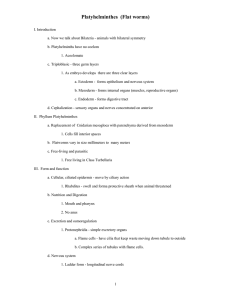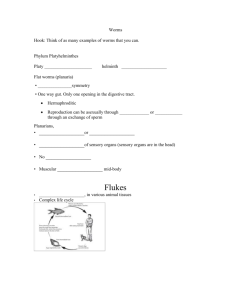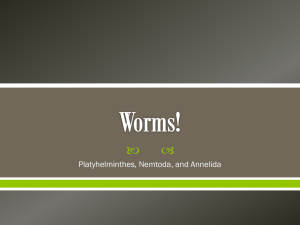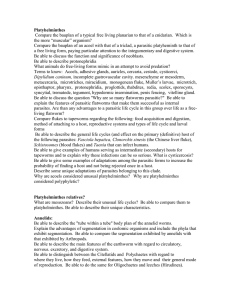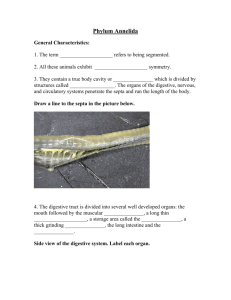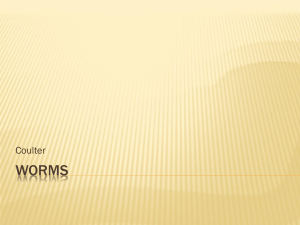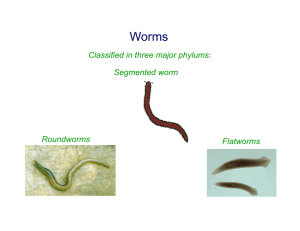Platynote - AspenbiologyII
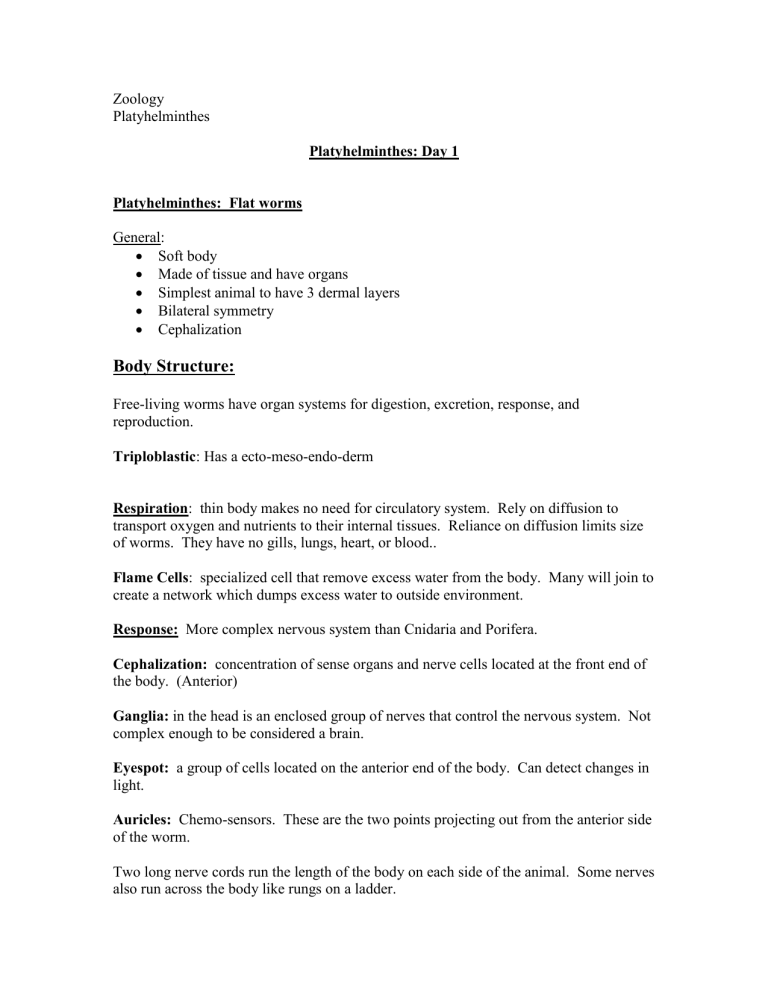
Zoology
Platyhelminthes
Platyhelminthes: Day 1
Platyhelminthes: Flat worms
General:
Soft body
Made of tissue and have organs
Simplest animal to have 3 dermal layers
Bilateral symmetry
Cephalization
Body Structure:
Free-living worms have organ systems for digestion, excretion, response, and reproduction.
Triploblastic : Has a ecto-meso-endo-derm
Respiration : thin body makes no need for circulatory system. Rely on diffusion to transport oxygen and nutrients to their internal tissues. Reliance on diffusion limits size of worms. They have no gills, lungs, heart, or blood..
Flame Cells : specialized cell that remove excess water from the body. Many will join to create a network which dumps excess water to outside environment.
Response: More complex nervous system than Cnidaria and Porifera.
Cephalization: concentration of sense organs and nerve cells located at the front end of the body. (Anterior)
Ganglia: in the head is an enclosed group of nerves that control the nervous system. Not complex enough to be considered a brain.
Eyespot: a group of cells located on the anterior end of the body. Can detect changes in light.
Auricles: Chemo-sensors. These are the two points projecting out from the anterior side of the worm.
Two long nerve cords run the length of the body on each side of the animal. Some nerves also run across the body like rungs on a ladder.
Movement: using cilia on their ectoderm to glide over water and objects. Also use muscle cells controlled by the nervous system. Able to twist and turn to react quickly to stimuli.
Feeding : carnivorous or scavengers, feed on microorganisms. Like cnidarians they have a single opening, or mouth, which is used for feeding and waste removal.
Pharynx: muscular tube which extends out of the mouth and then pumps food into the gastrovascular cavity. GVC is made up into 3 branches on each side.
Some worms are parasitic and feed on blood or tissue of the host. Many obtain food from pieces of digested food in the host gut.
Reproduction: Sexual most common.
Hermaphrodite: having both female and male sex organs.
Two worms join in a pair and both receive sperm which then fertilize eggs. Eggs develop in the body and are then shed off in capsules. Takes a few weeks to hatch.
Asexual reproduction: Fission: the organism splits in two. In some species the worm
“falls to pieces” and each piece creates a new worm.
There are 240 genes associated with regeneration and many of those genes are in the human genome!
Groups of Flatworms:
Turbellarians: Free-living flatworms. Marine and Fresh water. “Cross-eyed”
Termatoda: Flukes: parasistic worms. Can cause Schistosoma, swelling and decay of body tissues.
Cestoda: Tapeworms: live in the intestines of the host. Food absorbed directly into body. They have no digestive tract.
Body divided into section called Proglottids. Each section has reproductive organs.
Proglotidds are released through host excretion to then be picked up by another host.


